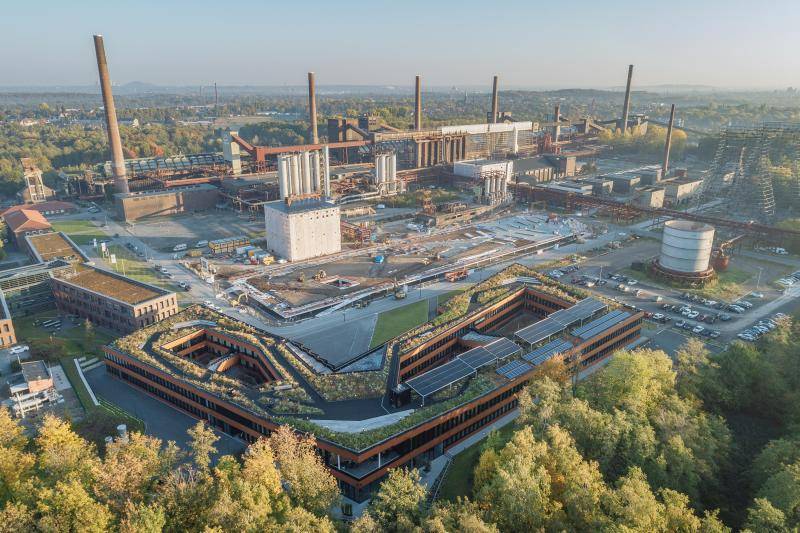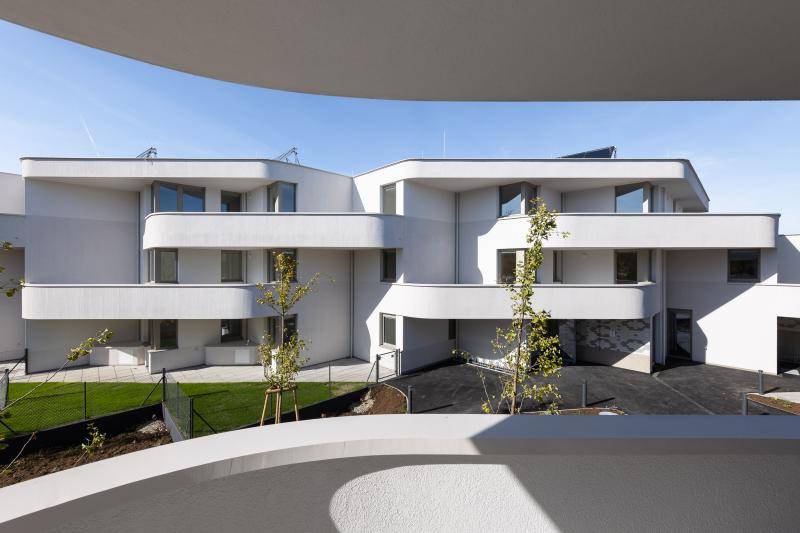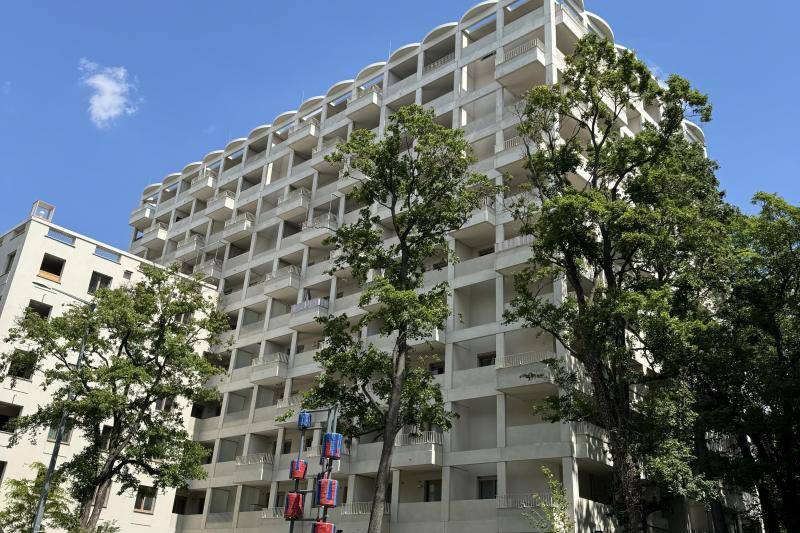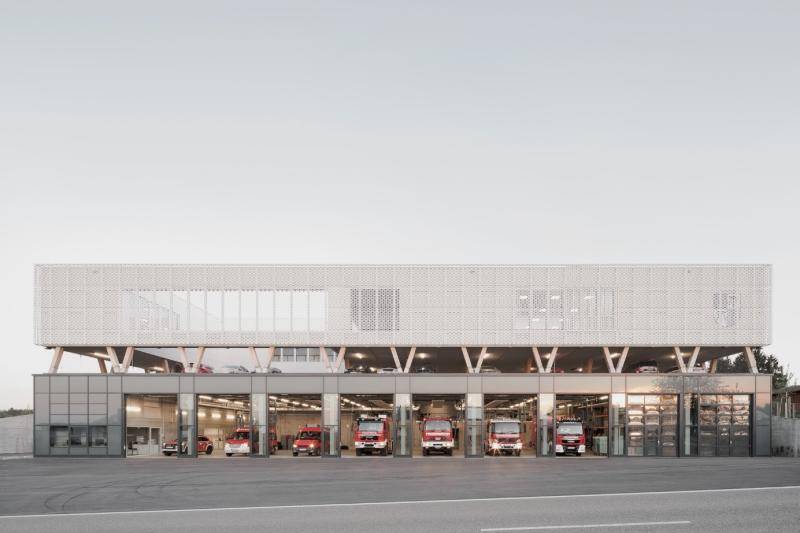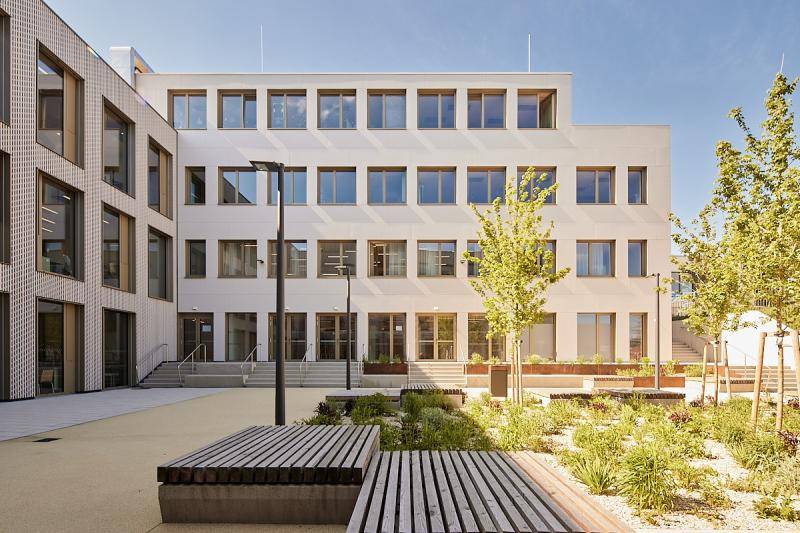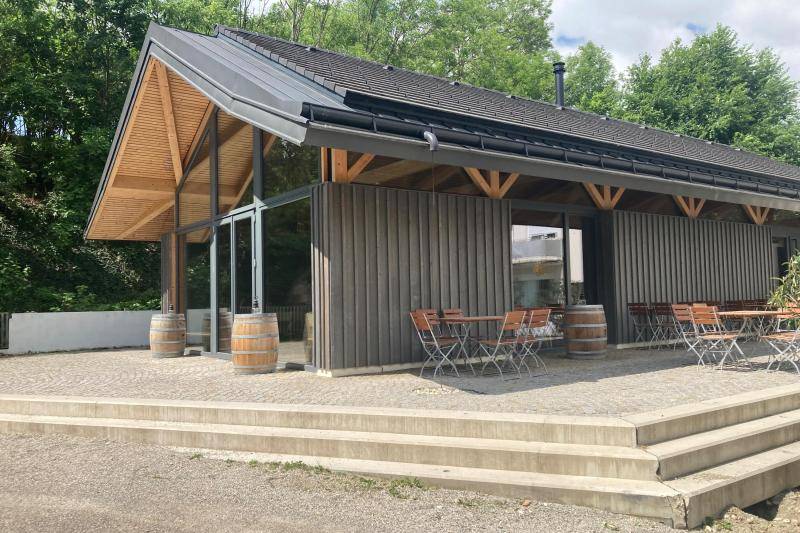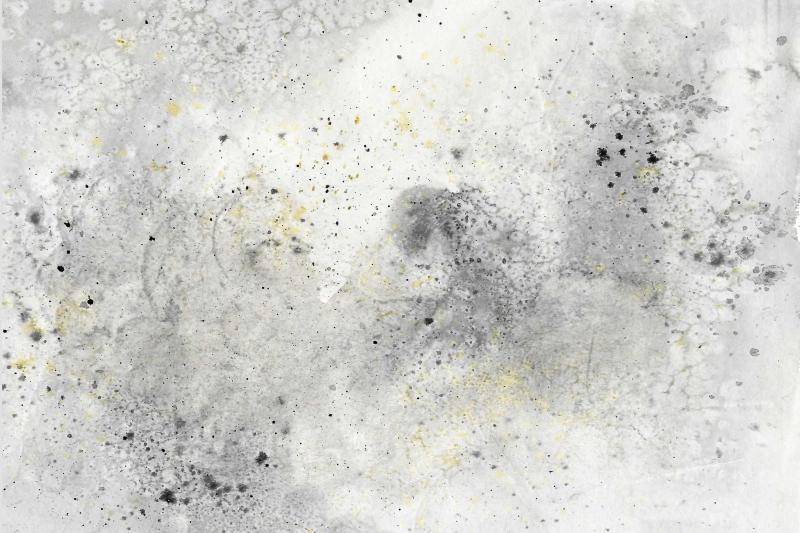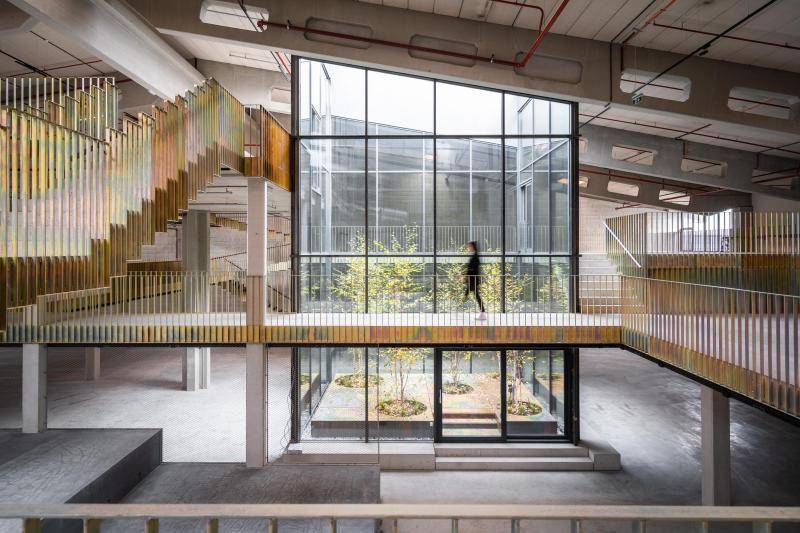Off. Auto
Off. Auto is a conversion project in Cesena, where a former 1950s car repair workshop was transformed into a combined living and working space for a family. The original structure was largely retained and carefully adapted to meet contemporary technical and spatial standards. The project exemplifies a resource-efficient approach to building transformation and reflects core principles of circular architecture.
2022
175 m²
Privat
Chief architects: arch. Stefano Piraccini, arch. Margharita Potente
Project lead: arch. Gianluca Bertoli
Project team: arch Teresa Cancellari, arch. Beatrice Enti, arch. Marco Marchetti, arch. Amedeo Palagano
Edil Salces sas, Cesenatico
Custom-built timber fittings: Falegnameria Mazzoni
Windows / profile systems: Secco Sistemi
Cement screed floors: Compan
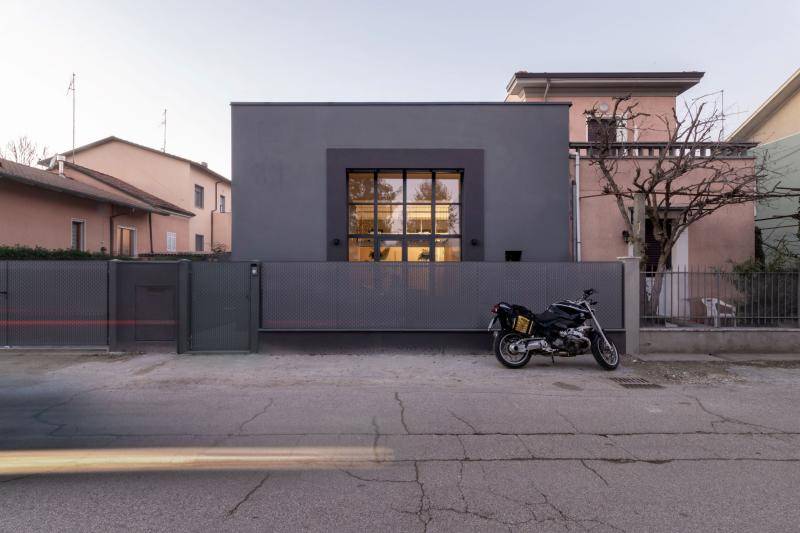
The original building envelope of the former workshop was fully retained. The massive outer walls consist of double-layer masonry, while the roof slab combines brick and concrete. The original structure had no floor slab; as part of the renovation, a new insulated slab was added by excavating within the existing building volume. The exterior walls were upgraded with an external thermal insulation system, and the roof was improved in terms of thermal performance. Inside, the historical masonry structure was preserved, sandblasted, and repaired — a deliberate reference to the building’s industrial past.
The interior layout was reorganized by inserting three timber volumes into the existing space. These freestanding boxes act as independent elements within the structure and are functionally differentiated: the lower levels accommodate private spaces such as bedrooms, bathrooms, and utility areas, while the upper surfaces are used for work-related functions — including a pilates room and a smart working zone. The volumes are connected by bridges and intermediate platforms that thread between the preserved concrete frames, creating a continuous spatial sequence.
The new additions remain clearly distinguishable from the original structure. The exposed masonry facade recalls the building’s origin, while all new components — including custom-built timber furniture, platforms, and metal railings — were designed for reversibility and material separation. A large part of the interior fittings was handcrafted: timber elements were made by a local joinery, while metalwork was custom-fabricated by a blacksmith based on design specifications. The industrial character of the building remains legible not only in the preserved structure, but also in the detailing — through raw steel profiles, wire mesh railings, and push-button controls reminiscent of industrial equipment.
To improve energy efficiency, the thermal envelope was insulated, high-performance windows were installed, and underfloor heating was added. The heating system is embedded in a quartz-finished concrete floor that contributes to the building’s thermal mass and helps stabilize indoor temperatures, thereby reducing energy demand.
Off. Auto demonstrates how industrial building stock can be carefully transformed into flexible, functional living and working spaces — through precise, reversible interventions that combine architectural quality with technical clarity and a resource-conscious approach to reuse.






